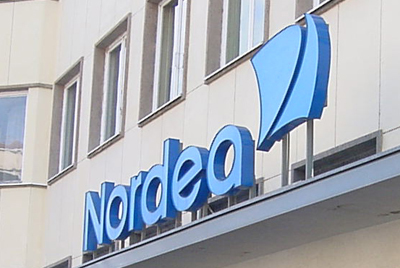Export finance head interview – Nordea
TXF talks to Nordea about some of the major trends impacting the export credit sector at the present time.

Aila Aho, global head of export finance, ~Nordea^, in Helsinki
TXF: How do you view the present state of the export finance sector, and how is Nordea’s business line doing?
The demand for export finance is still there, but compared to say last year the overall volume of transactions is lower. And the outstanding  guarantee volumes at the ECAs are down. It is clear that some projects most of us expected to see in the market are not closing – and there are a variety of reasons for this, although much of this relates to overall investment decisions. In relation to our own business, exports from the Nordic countries are very dependent on economies in other markets, and given some of the economic problems in target markets many Nordic exporters have suffered. However, we have a good pipeline of deals.
guarantee volumes at the ECAs are down. It is clear that some projects most of us expected to see in the market are not closing – and there are a variety of reasons for this, although much of this relates to overall investment decisions. In relation to our own business, exports from the Nordic countries are very dependent on economies in other markets, and given some of the economic problems in target markets many Nordic exporters have suffered. However, we have a good pipeline of deals.
TXF: How do you view competition currently?
Competition is heavy due to several factors, for example: general lack of good lending opportunities, strong corporate balance sheets, a shift to bonds and to a certain extent the demand from non-bank investors. A polarisation of the market seems to be taking place, the good well known names borrowing large amounts get extremely good terms, whereas it is more difficult to find the banks for smaller projects. The French banks are certainly back, and that is clearly seen in the market. The Japanese banks are very active, they have the liquidity and are willing to spend while also extending tenors further than most. At the same time, there are also new investor classes coming into export finance.
TXF: How is pricing being affected by liquidity and competition?
The general panic around liquidity has eased considerably and is no longer a strong factor as it was before. The ECA-related funding vehicles play a major role in the Nordic area, while in other markets – for example in Japan, and some others – banks don’t seem to have maturity or liquidity issues. However, tenors over 10-years are still somewhat challenging. In addition to this, the lack of good lending opportunities is putting pressure on most bank products including export finance.
A polarisation of the market seems to be taking place, the good well known names borrowing large amounts get extremely good terms, whereas it is more difficult to find the banks for smaller projects.
For big corporations, export finance remains a quality driven option. On the other hand, for smaller corporates, who are not so wellknown and possibly more frontier-focused, it is all about KYC. As such there are considerable pricing variations – if the deal can get underwritten in the first place. All banks tend to prioritise clients differently.
TXF: How do you see the relationships now between export finance and other products in the armoury of trade banks?
And what does this do for the clients? Several banks and exporters seem to count ECA as ancillary business, especially for the better buyers. From a risk perspective this is well justified. However, the role the commercial banks play in securing the documentation and agency should not be underestimated, although the value is mainly tested only when there are unexpected events on the way. In our institution, our export finance line is within the capital markets part of the bank – so we have made the move in that regard.
It is important to keep the flexibility of balance sheet and increase the share of liquid assets, especially as a tool to mitigate future changes in the markets and regulation.
We know that our clients want to have this and other products as part of their tool box. It works well and helps our customers get services from one place, as we all sit on the same floor. This has been very positive for us and for our clients.
TXF: How has Nordea been affected by regulation a) Basel III b) environmental c) compliance?
The way we are affected by regulations may be more so than banks outside Europe. There is uncertainty around the timing and other details of the implementation of Basel III, and we need to prepare for all alternatives to stay on the safe side. For example our tier one ratio is already compliant. Environmental and CSR compliance are a natural part of the Nordic thinking, although it is fair to say that our competences are clearly more advanced in evaluating credit and financial risks. However, we know that environmental issues can be a problem for exporters at times when they are bidding. We are an Equator Principles bank, and it is quite natural for us to follow this. The impact of increased compliance is seen in the allocation of resources, like I’m sure in all financial institutions, as we have to and want to comply with the various initiatives. The impact has to be taken into account when evaluating the business models.
TXF: Where do you think Nordea has a real advantage in the market?
Our commitment to the relationship-based business model adds value to our customers and has been proven over the economic cycles. Also, the good credit rating we and the Nordic countries have attracts customers. In addition, our operational model combining the capital markets product units gives us additional strength and a unique approach in the ECA business. We believe this will further enhance our position over time. Also the proximity to the ECAs and deep understanding of selected industries will make our own decision making faster and more predictable, and we believe the exporters and borrowers find it easy to work with us.
TXF: What sectors, countries/regions or clients do you see being major users of export credit/ECAbacked finance in the mediumterm?
I believe the trend of using the ECA product also in the OECD area will continue as it is recognised as a perfect tool to arrange long-term financing for large investments, with no negative carry in the beginning, draw down exactly when needed and cash payment at delivery for the exporter. CFOs in general aim at a healthy debt maturity profile based on various and not interlinked funding sources – here the ECA product is a low hanging fruit to pick. Typically those who have learned the product keep it in the arsenal, and of course we are happy to see more customers joining this club. In general the ECA product remains an important source in the countries where external or long-term financing is not largely available for all borrowers.
TXF: How do you see the ECAs changing in the way they operate?
Economies are stretched throughout Europe. ECAs are stepping up to the challenge of our economies. All countries try to boost exports to improve growth and budget deficits, and on short term business especially as a means to improve the employment situation. This has led to increasing flexibility and innovative schemes. On the other hand there is also a more scattered market which has led to various tailormade solutions. The liquidity concern has been taken seriously in many places and new products are being developed to help in situations where domestic vendors are competing with imports relying on foreign ECA support.
In our institution, our export finance line is within the capital markets part of the bank – so we have made the move in that regard. We know that our clients want to have this and other products as part of their tool box. This has been very positive for us and for our clients.
The options for direct lending vary from country to country. The big question is, where do you draw the line as to when the public sector gives support? The criteria the ECAs use to select projects is pretty much the same as those that commercial banks use. In places the support is invaluable. In Sweden, you have had the SEK option for some time, and similarly with FEC in Finland. With regard to attracting new investors, Denmark’s EKF has been innovative and active.
TXF: How important is it for you to move assets off balance sheet, and what comment can you make in relation to new investors in export finance?
It is important to keep the flexibility of balance sheet and increase the share of liquid assets, especially as a tool to mitigate future changes in the markets and regulation. On short-term business we try to balance the interests of various stakeholders, and stay competitive! ECAs are an interesting asset class to many debt investors, who are also our customers. The agency role that all investors – bank or non bank, will require to keep this market afloat, needs to be included in the business model. Attracting pension funds and insurance investors into this arena will depend on regulatory issues and these vary from country to country or region. We are starting to see these institutions looking for assets with a good yield. But it is still a scattered market and there remains a big education process.
The Next article: Export finance head interview – Société Générale CIB
The Previous article: Export finance head interview – Investec






